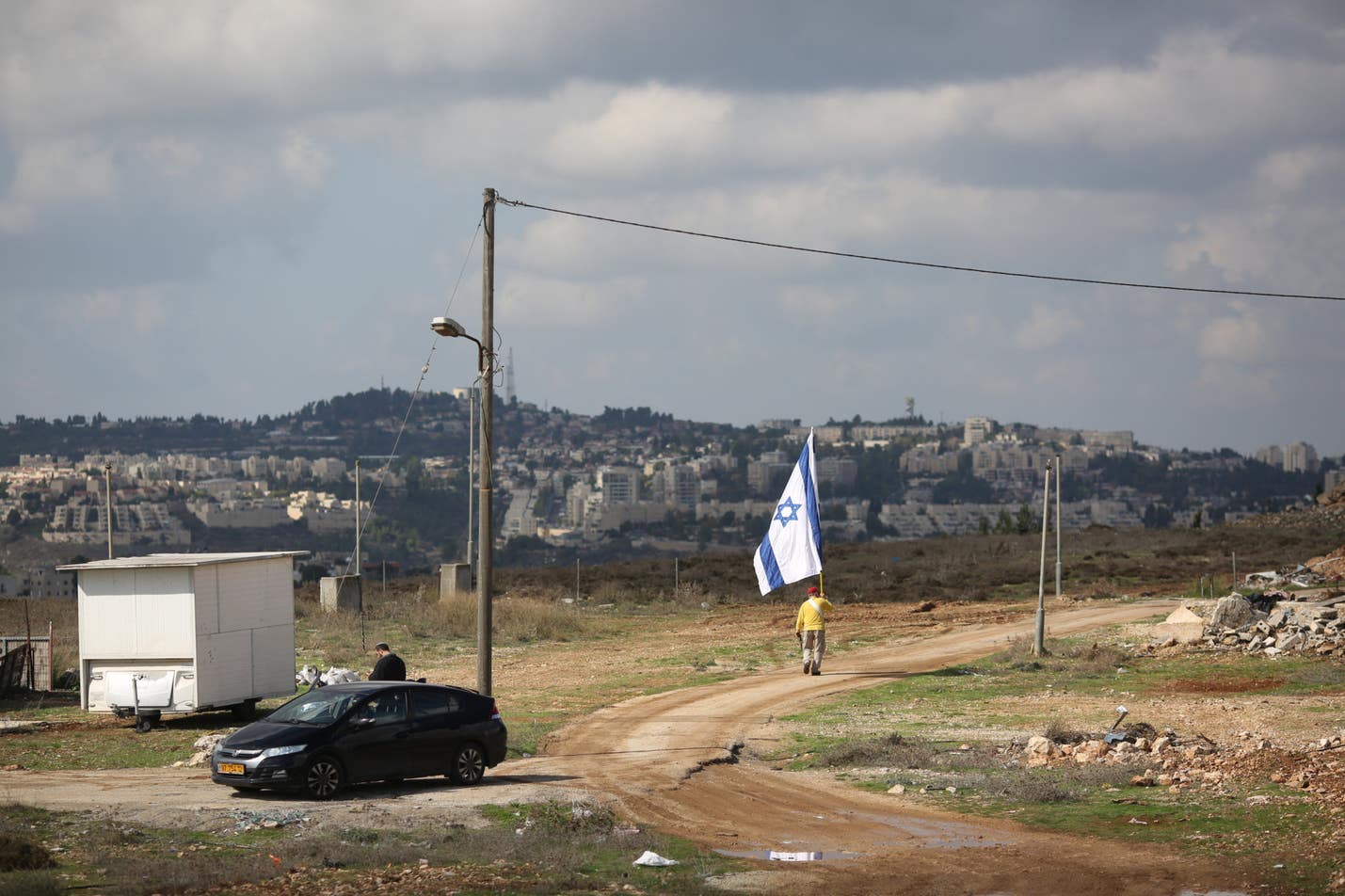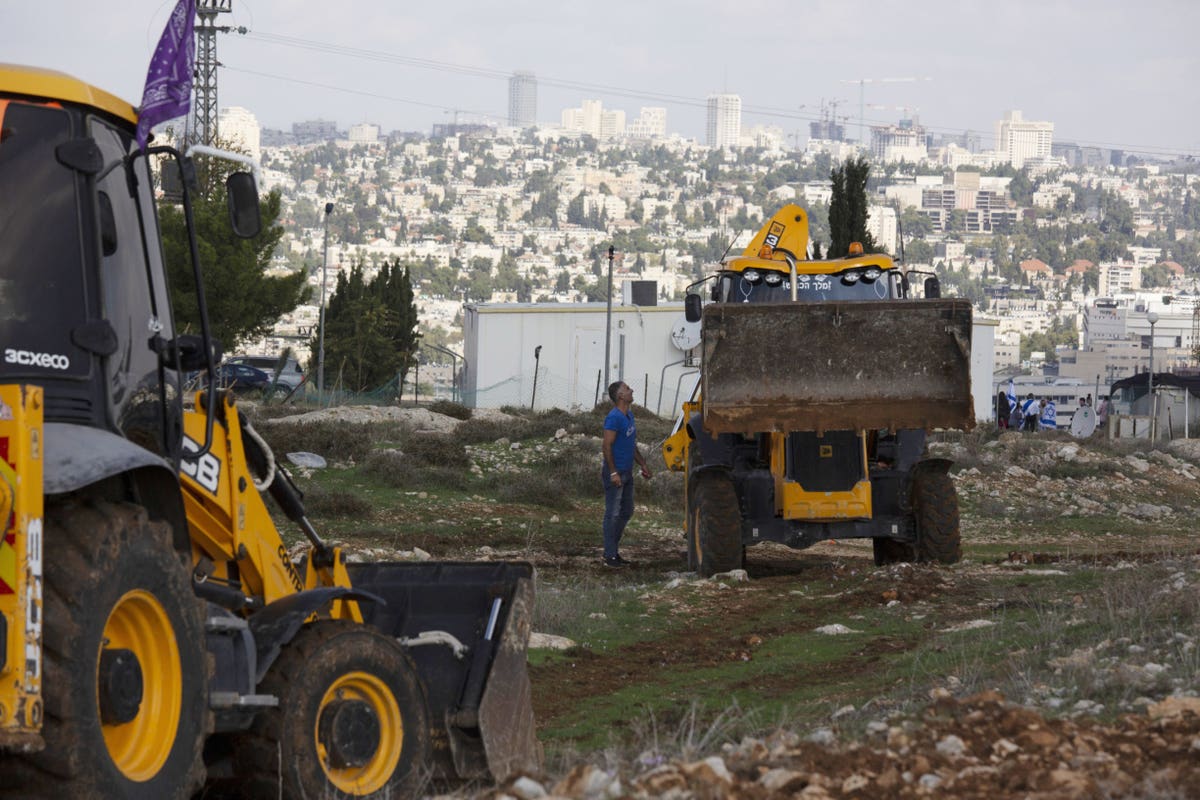Israel Advances Thousands of Housing Units in East Jerusalem as Biden Remains Silent
 Saturday, October 16, 2021 at 03:23PM
Saturday, October 16, 2021 at 03:23PM The Biden administration is so far refraining, at least publicly, from pressuring Israel to freeze construction plans beyond the Green Line
by Nir Hasson and Jonathan Lis. 14 October 2021. Haaretz

Givat Hamatos, E1, Atarot and Pisgat Ze’ev – these are all areas in or around Jerusalem that lie beyond Israel’s 1967 borders, where the state is currently advancing extensive building plans for Jews. The Biden administration is so far refraining, at least publicly, from pressuring Israel so that it freezes these construction plans. Given the composition of Israel’s government, such pressure could turn into a political crisis.
On Wednesday, Jerusalem’s local planning committee approved the expropriation of land in Givat Hamatos and approved the filing of plans for expanding Pisgat Ze’ev. Opposition to the establishment of a new neighborhood in E1 will be discussed next week, with further discussions next month about a large Jewish neighborhood in Atarot, also beyond the Green Line – the armistice demarcation line before the 1967 Six-Day War. The Construction and Housing Ministry is behind most of these initiatives.

The Givat Hamatos and E1 area were always a red zone for the U.S. and the international community. The two plans are considered particularly problematic since Givat Hamatos would completely cut off the large village of Beit Safafa from Palestinian East Jerusalem, surrounding it with Jewish neighborhoods. Construction in E1 would split the West Bank into two parts, impeding traffic between the northern and southern parts of the West Bank. For the international community, these would constitute two nails too many in the coffin of the two-state solution.
The new neighborhood in Givat Hamatos, with its 1,257 housing units, would be the first new Jewish neighborhood to be built in Jerusalem in the last 30 years. The previous one was nearby Har Homa, which Palestinians and some in the international community consider to be an Israeli plot to disrupt the Oslo accords.
During Barack Obama’s term in the White House, the Prime Minister’s Office refrained from advancing these two plans due to American pressure. Even when Donald Trump assumed office, Israel did not rush to build in these areas. Only in February 2020, six days before Israel’s third election round, did then-Prime Minister Benjamin Netanyahu give instructions to speed up construction of the new neighborhoods.

What was first perceived as an election stunt became a reality – a few days before U.S. President Joe Biden’s inauguration, the bidding process was closed for Givat Hamatos, and bulldozers began preliminary work on the ground. Settling the E-1 area, for which in which 3,500 units are planned, still needs to pass through some hoops, but the Bennett government is fast approaching a mine laid by Netanyahu in at the twilight of his rule.
The building momentum beyond the Green Line in Jerusalem continues in other locations as well. On Wednesday, Jerusalem’s local planning committee recommended the approval of 470 new units in Pisgat Ze’ev. The Housing Ministry declared that this involves the use of open urban areas within the municipality’s jurisdiction, constituting part of an “urban renewal.” But a quick glance at the map shows that this is in effect an expansion of the Jewish neighborhood toward the separation barrier that divides it from the village of Hizma.
- Using Hamas and Hezbollah, Iran feels immune. Israel can change that
- Highways to annexation: Across the West Bank, Israel is bulldozing a bright future for Jewish settlers
- To stave off opposition to settlement expansion, Bennett gives rare approval for 800 Palestinian homes
- Netanyahu revives settlement construction plan that critics say would split West Bank
On December 6, the district planning committee will discuss the establishment of a large neighborhood containing 9,000 housing units near the Atarot airfield. Atarot also lies in a very sensitive area for anyone still insisting on establishing a Palestinian state. The Atarot industrial area and the adjacent abandoned airport lie between the neighborhoods of Beit Hanina and Kafr Aqab, constituting the last free space for development left for Palestinians in the Jerusalem area.
Biden is experienced in breaking the rules of the game when confronting Israel’s government with regard to construction beyond the Green Line. During his 2010 visit as Obama’s vice president, the Interior Ministry published a plan for expanding the neighborhood of Ramat Shlomo. The plan evoked unprecedented fury from the Obama administration. Biden, who felt humiliated by Israel, was on his way to dinner with Netanyahu. It recently came to light that during that evening, he demanded that the White House call him back home, and showed up for the dinner only after much urging. The crisis marked the onset of a years-long freeze in Israeli construction in East Jerusalem and the West Bank, which only thawed during the Trump years.
 APJP |
APJP |  Post a Comment |
Post a Comment | 